|
Bring the rope up in front of your form, pass around behind
it, and then around front again, crossing over the first pass you
made.
|
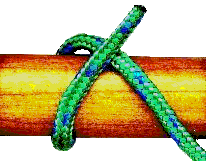 |
| Now take the working end behind the form again, and bring it to
the front, crossing your last pass, and parallel to the first
one. |
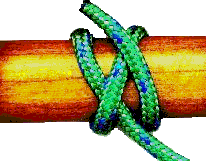 |
| Now tuck the working end under the first pass you
made. |
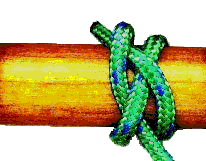 |
| Roll the form toward you. Your working end should now be on the
bottom, and your previous work should show two, mostly parallel,
ropes. |
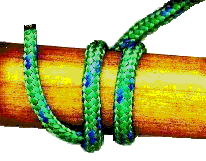 |
| This is the only tricky part. Look for the parallel rope that
is furthest from your working end, and pull it over the
other rope, making a small opening or eye. |
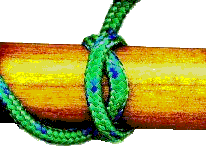 |
| Now tuck your working end over the first rope, down
through the eye you just formed, amd under the second rope.
Now take the working end up and over the form. |
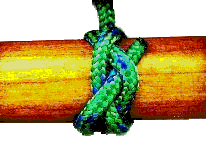 |
Roll the form back towards you. Believe it or knot, the basic
Turkshead is now done! It only has one pass, though, so you will
probably want to double or triple it.
Take the working end and tuck it next to your very first rope, and
thread it into and out of the knot, always staying exactly next to
the first pass you made. |
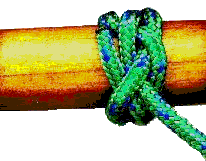 |
This image shows a doubling pass almost completed. Remember,
you're just putting one pass right next to the previous one.
Neckerchief slides can be made with a doubled or tripled
Turkshead. |
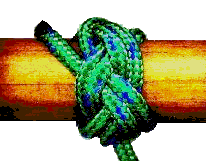 |
The ends of a Turkshead should always be hidden, tucked into
the knot. One thing I like to do is bring the ends up between two
of the passes before tightening the knot.
Tightening the Turkshead is essential, and is done by slowly
working the ends through, until it is firm. |
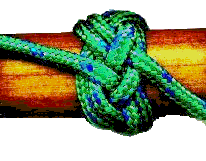 |
That's about it! If you have other options,
suggestions, or comments, please let me know!








